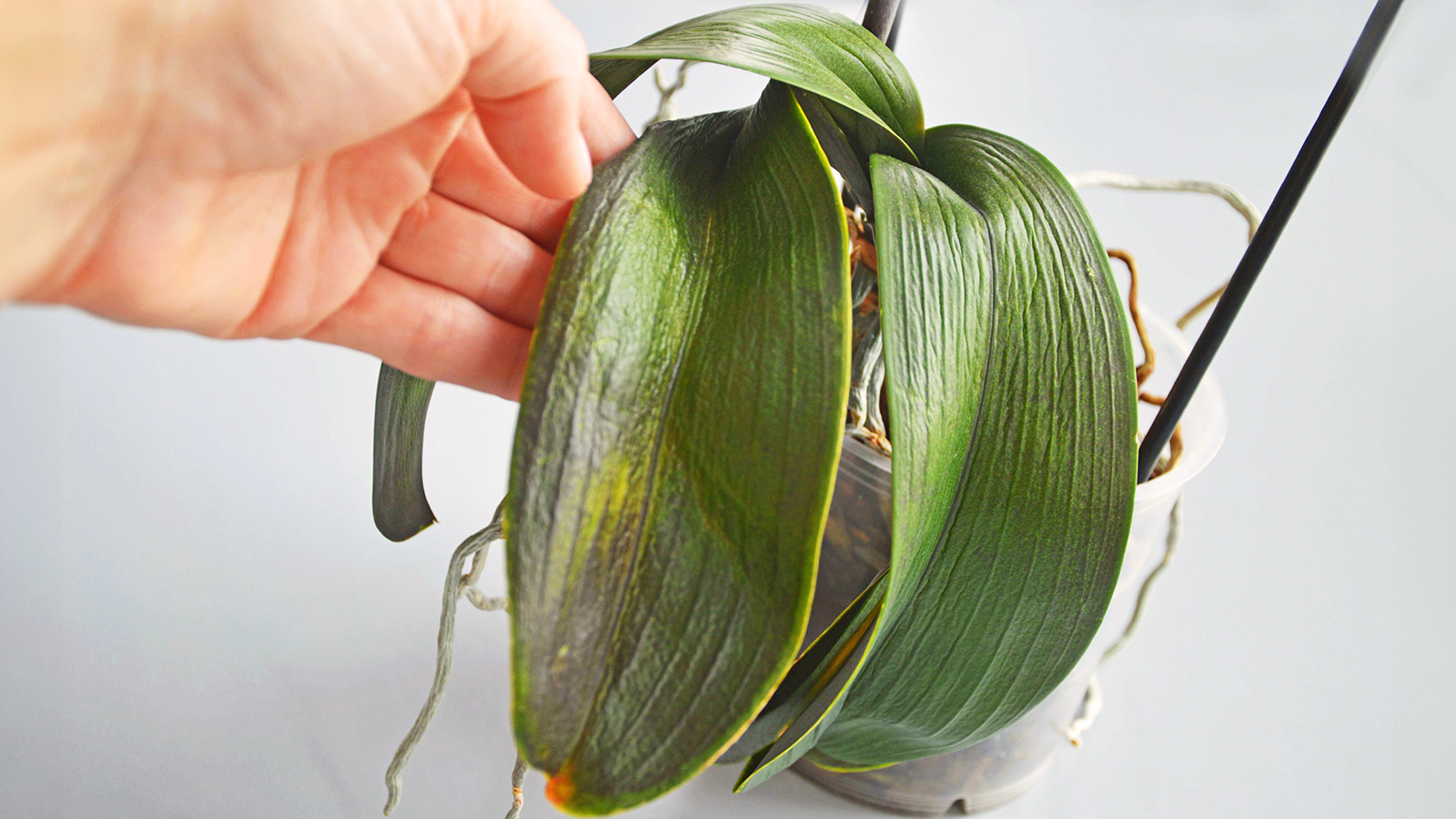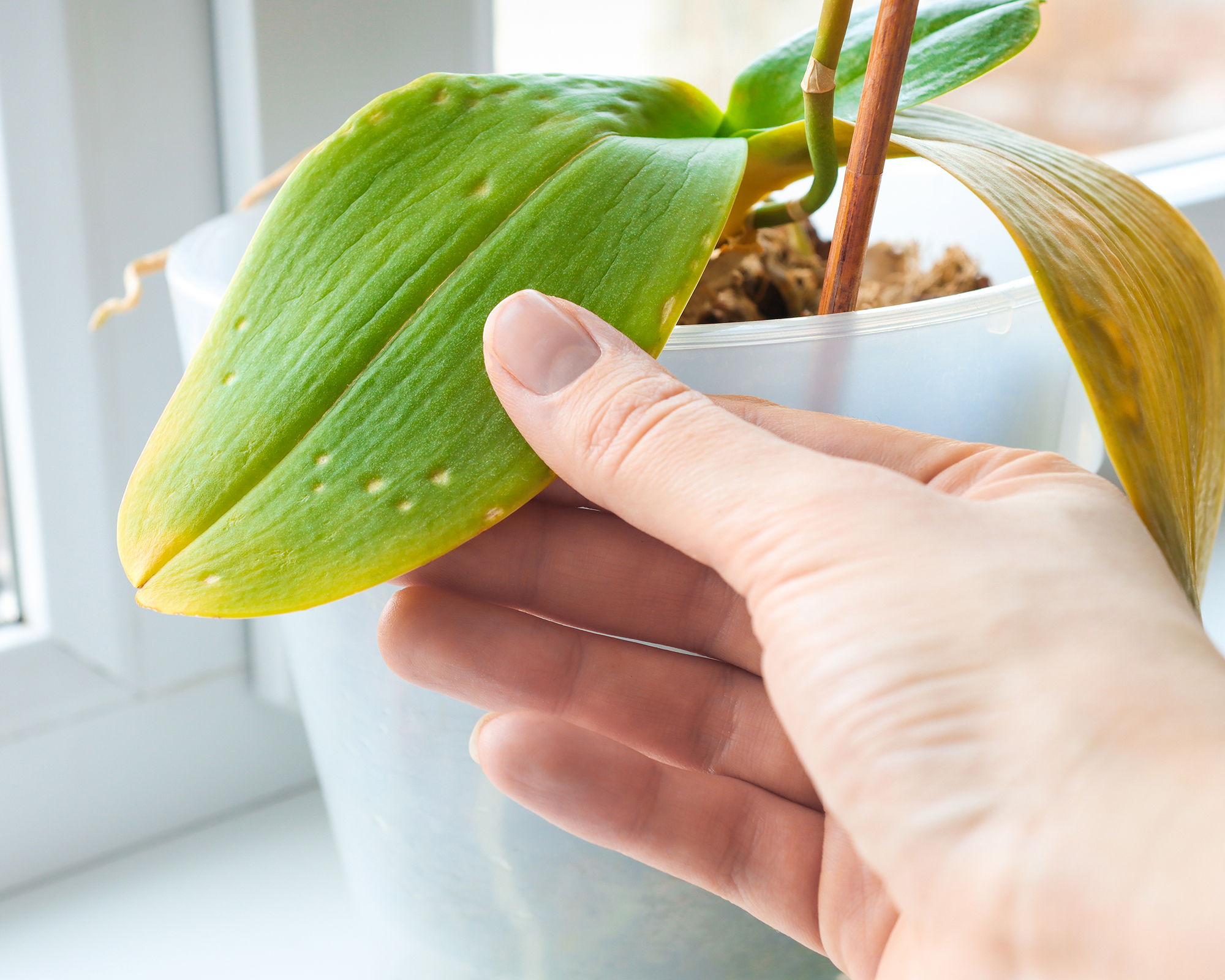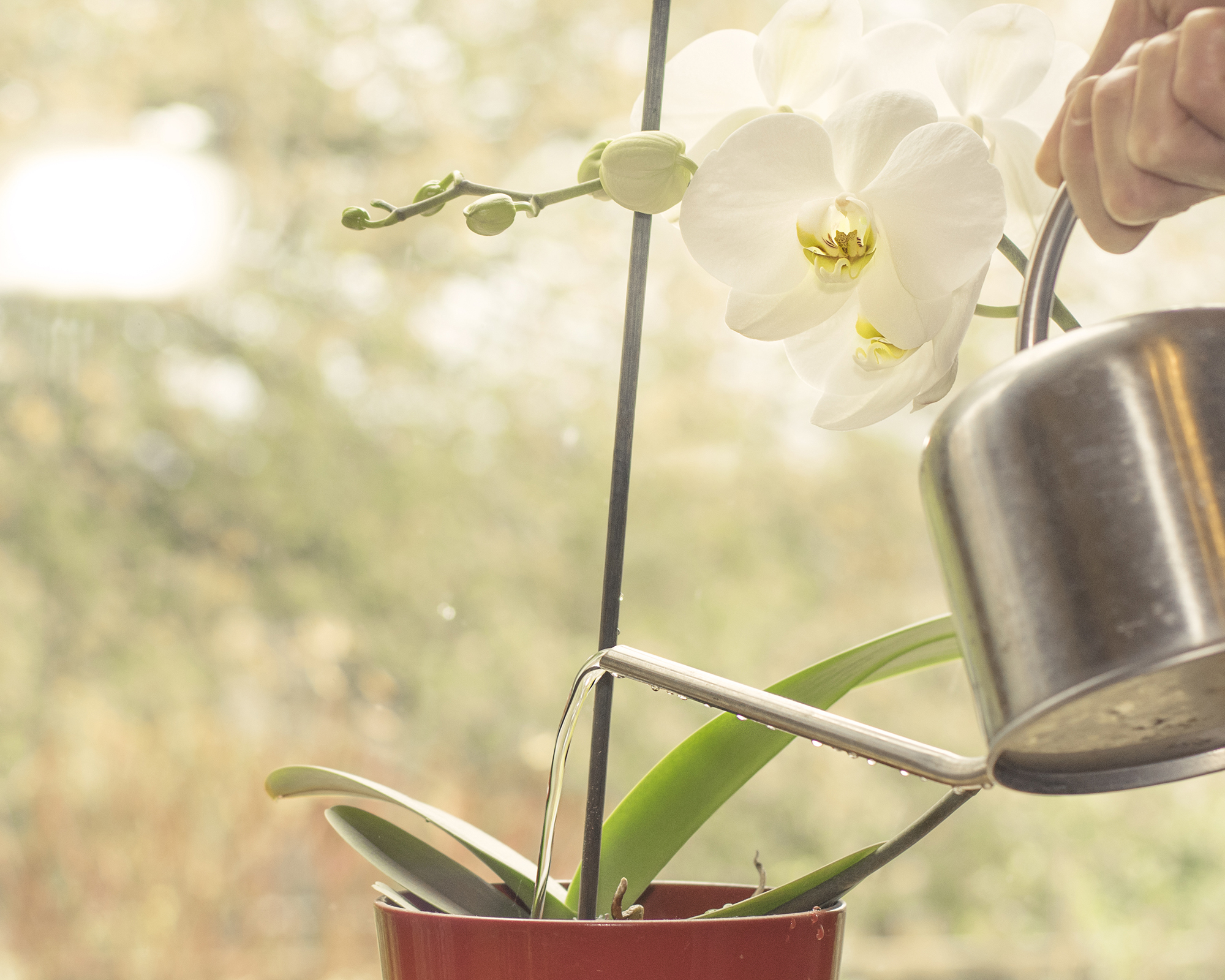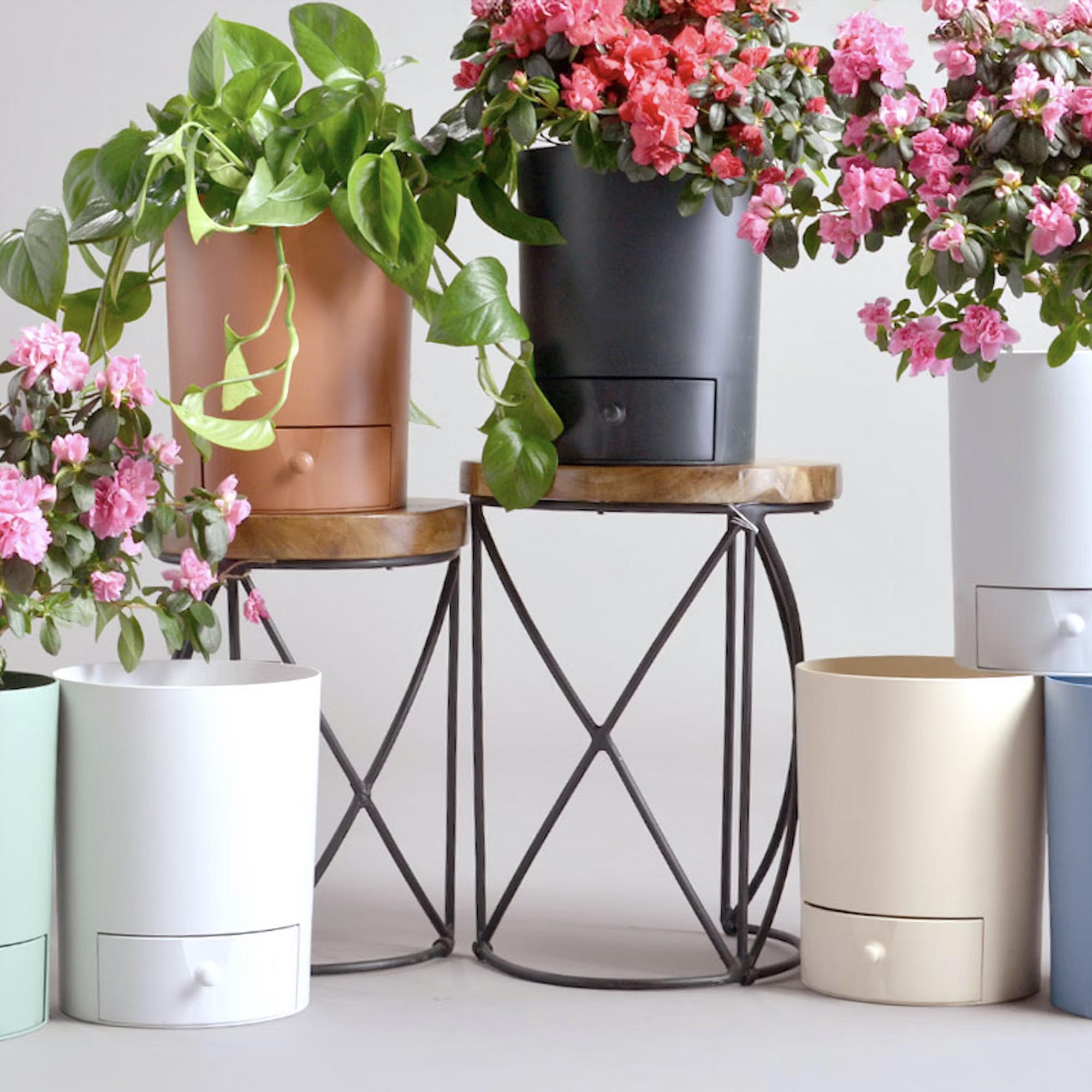Orchid Leaves Wrinkled? 5 Common Causes & How To Restore Their Vitality
Are your beloved orchid's leaves wrinkled? Worry not! Here are the most common causes for puckered orchid foliage, plus how to plump them back up.


Melanie Griffiths
Best known for their unique forms and enchanting colors, orchids are beloved by novice and seasoned growers alike. Though select species have earned their reputation as exceedingly difficult to grow, most will flourish with little care or attention. However, sometimes things go out of balance and, when faced with an issue like wrinkled orchid leaves, it's important to understand where you're going wrong.
First and foremost, meeting the plant's cultural requirements is essential to avoiding common orchid problems. This primarily means providing the correct moisture, light, and temperature levels, but other factors play a part, too. Poor orchid care causes stress to plants and makes them more susceptible to disease and pests. Resultant symptoms, such as wrinkled leaves, may be the first sign that something's not right.
The good news is that wrinkled leaves are usually only temporary and are seldom the result of orchid diseases. In this guide, we’ll explore the various causes of an orchid with wrinkled leaves, as well as its treatment and resolution.
Identifying Wrinkled Orchid Leaves
The overall look and feel of plant foliage can give good insight into orchid health. Strong leaves should be plump, taking on a slightly rubber-like texture. Foliage of this type will stand erect, with leaves held well above the container. All parts of the plant should be uniform in color, ranging in shade between light and medium green.
Sudden changes in appearance, such as wrinkling, may be indicative of plant stress. Foliage of this type will have a definitive look, with each leaf showing notable striations across its surface. Such plants will often droop, taking on a leathery feel as the condition persists. In more severe instances, wrinkled foliage may begin to yellow, browning and dying back over time.

Common Causes of Wrinkled Orchid Leaves
Wrinkled orchid leaves may occur due to several reasons relating to cultural or environmental conditions. Watering issues are the most common cause, with both underwatering and overwatering potential culprits.
1. Underwatering
In types of orchids with thin leaves, like Dendrobium, Miltonia, and Cymbidium, underwatering is usually the cause of wrinkling. Particularly thirsty plants are likely to wilt or begin to droop. Growers may also observe a change in the appearance of orchid roots, each drying or becoming much more brittle. This may be especially evident when plants are repotted, making them more difficult to handle.
Sign up for the Gardening Know How newsletter today and receive a free copy of our e-book "How to Grow Delicious Tomatoes".
For thick-leaved orchids like Phalaenopsis and Cattleya, inconsistent watering may be to blame. For example, plants may experience a long period of dryness before growers overcompensate by overwatering.
2. Overwatering
All orchid types may develop wrinkled leaves due to overwatering. First roots will begin to soften, eventually leading to orchid root rot – that most dreaded of diseases. If the roots are rotting or not functioning properly, the plant is unable to absorb water and nutrients, leading to wrinkled leaves. In such cases, time will be of the essence, and you will need to work quickly to avoid the complete loss of your orchid.
When watering orchids, it's best to feel for dryness rather than following a schedule. Push your finger into the potting mix, feel the pot's drainage holes, and if the container is transparent, examine the contents for signs of moisture, such as condensation. If things look moist, check again in a couple of days; if things look dry, you're safe to water.

3. Nutritional Issues
Orchid leaves turning yellow, in tandem with a wrinkled appearance, may result from nutrient deficiencies. Large plants can deplete the growing medium quickly, prompting the need for routine orchid fertilizing. Use a water-soluble feed designed for orchids and apply once or twice per month when the plant is in active growth.
A tired, broken-down potting medium can also lead to nutrient deficiencies. If it has not recently been replaced, then learn how to repot orchids correctly and refresh the mix. Rather than soil, a specialist orchid potting medium should contain ingredients such as peat moss, perlite, or fir bark.
4. Environmental Stress
Changes in light, warmth, and humidity may cause foliage to wrinkle. This occurs in response to added stress where conditions are poor. Check for incorrect light levels, as orchid foliage may become dehydrated and burned when positioned too near direct sunlight.
Orchid light requirements differ by variety, but most prefer bright but indirect sunlight.

5. Pests
Several types of orchid pests may affect the health of leaves. In particular, sap-sucking insects like aphids, scale, and thrips can cause leaves to wrinkle, although other symptoms should be present, such as debris, damage to leaves, yellowing, and the bugs themselves.
Routine monitoring for pests is vital so they can be tackled at the first sign of issues. Pests can usually just be washed off the leaves, or you can use a neem oil spray.
How to Fix Wrinkled Orchid Leaves
Quick diagnosis is key to helping to fix wrinkled orchid leaves. Though severely stressed plants may be difficult to save, most can be revived successfully.
First and foremost, growers should devise a suitable watering plan. Establishing a routine, based on the needs of plants, will be key in helping potted orchids to recover. Aim to maintain consistent levels of moisture, making certain to avoid overwatering, allowing containers to dry only briefly. Bottom watering through submerging or soaking pots works well for orchids, but let the pot fully drain out before returning to its outer pot or tray.
Careful consideration of other cultural requirements related to orchid growth may also help to alleviate stress. Soil fertility will be key, with plants benefiting greatly from routine feeding. This is especially true through bud set, in preparation for flowering.
The plant’s need for consistent warmth and humidity will also come into play, helping to prevent stress and promote more vigorous growth.
Most wrinkled leaves are able to resume a normal habit. However, those showing signs of severe damage will be unlikely to recover. This generally includes those that have wilted, yellowed, or started to brown. Damaged or decaying matter of this type should be removed from plants as quickly as possible, helping to prevent further damage and the potential for disease.
More Orchid Inspiration
- Discover 8 rare orchids that make stunning houseplants – some are surprisingly easy to grow.
- Have you heard of Drain Drawer Pots? These clever containers, available in the Shop, let you fully soak the potting mix before letting it drain through by removing the drawer.
- Should you water orchids with ice cubes? Discover the pros and cons of this controversial method.
- Why is my orchid dying? 5 common causes & how to save it before it's too late.
- Sign up for the Gardening Know How Newsletter for a regular dose of houseplant and gardening inspiration – plus, get access to exclusive offers.

Tonya Barnett has been gardening for 13 years. Flowers are her passion. She has transformed her backyard into a cut flower garden, which she regularly chronicles on her YouTube channel http://www.youtube.com/@tonyawiththeflowers.
- Melanie GriffithsEditor in Chief
